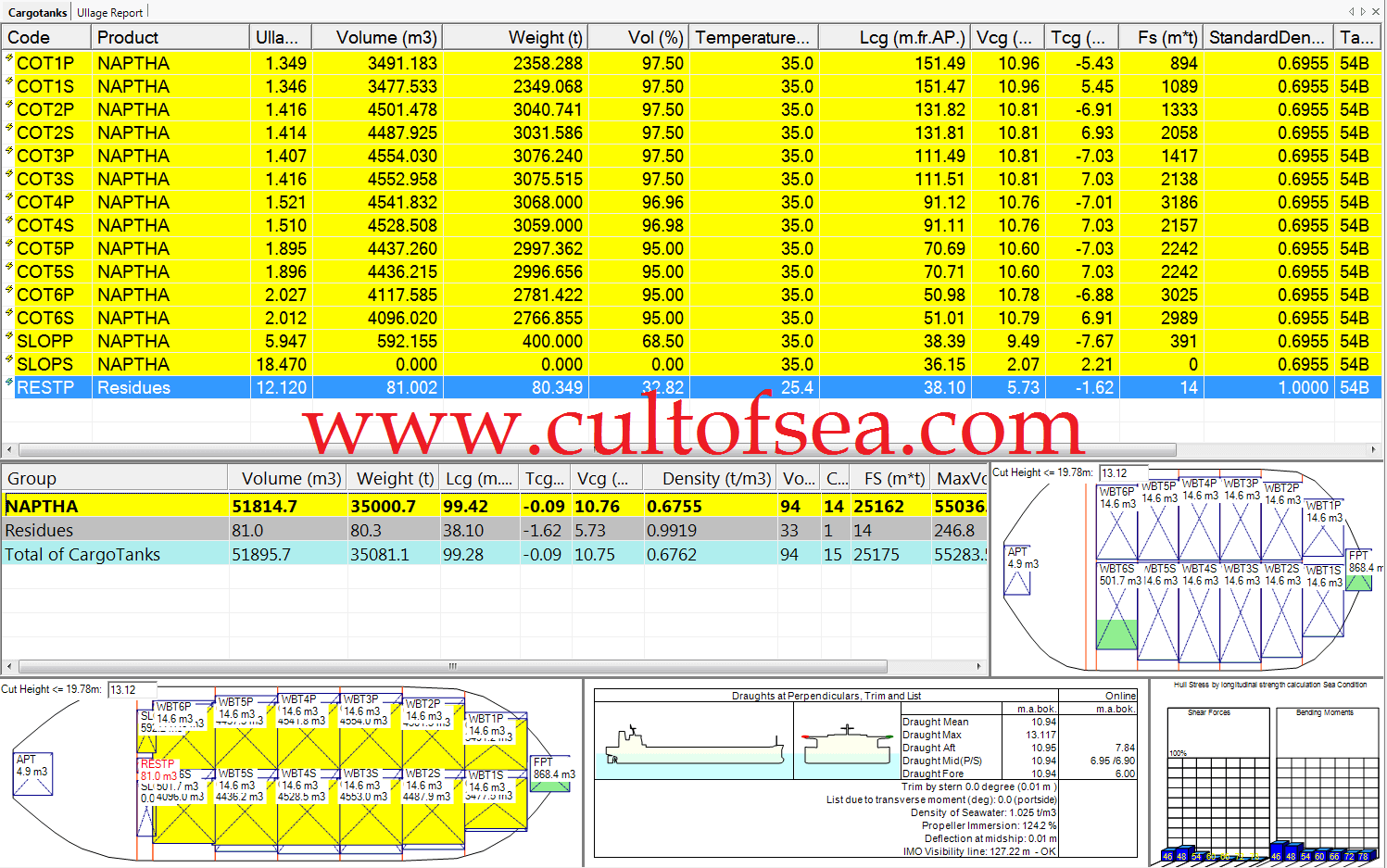Any Ship when at rest in calm water, the COB and the COG will be in a vertical line.Pitch Pitch is caused when a wave changes the underwater volume of a ship, making the forces of gravity and buoyancy to get separated by a distance and forming a couple which leads to dip or uplift in the bow or the stern of vessel. The up and down movement of the ship's ends, due to longitudinal shift of COB resulting from wave action, is called pitch.If a wave cause an increase in the underwater volume aft, and a decrease fwd, the COB will shift aft. The forces of gravity and buoyancy will now get … [Read more...]
Ship Stability Definitions related to Hydrostatic Particulars
Density of a substance is its mass per unit volume, normally expressed as tonnes per cubic metre in ship calculations.Relative Density of a substance is the ratio between the density of that substance and the density of fresh water.Displacement of the ship is the weight of the ship and its contents or the weight of water displaced by the ship in that condition.Displacement = Underwater volume of the ship x the density of the water in which she is floating.It should be noted that the volume of displacement is the underwater volume of the ship. When a ship proceeds from water of … [Read more...]

